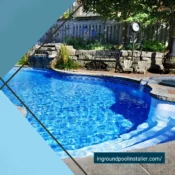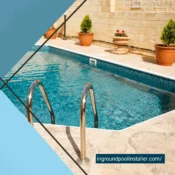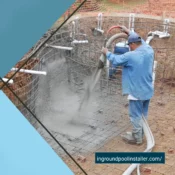The Appeal of Kidney-Shaped Pools: Selecting the Right Shape and Size

The Appeal of Kidney-Shaped Pools: Selecting the Right Shape and Size
The choice of a kidney-shaped inground pool, distinguished by its soft, curved lines and asymmetrical form, offers more than mere aesthetic appeal; it is a decision informed by a thorough understanding of spatial dynamics and user interaction. This design promotes a natural flow of movement and gathering within its contours, making it ideal for both leisurely swims and social gatherings. When considering the integration of such an inground pool into your landscape, it is crucial to evaluate not only the immediate visual impact but also the long-term functionality it brings to your outdoor space. As we explore the factors influencing the selection of the optimal shape and size, one must consider how these elements converge to enhance both property value and user experience.
Why Choose Kidney-Shaped Pools
Opting for a kidney-shaped pool offers both aesthetic appeal and practical advantages, making it a versatile choice for diverse landscapes and user needs. Architecturally, the kidney shape harmonizes with both organic and structured environments, allowing for seamless integration into a variety of landscape styles. Its soft curves echo natural water bodies, promoting a sense of tranquility and belonging, crucial for creating a communal and welcoming outdoor space.
From a functional perspective, the kidney shape is renowned for its efficient circulation dynamics. The configuration facilitates the natural movement of water, ensuring more effective filtration and maintenance. This dynamic also strategically positions the pool's deeper and shallower sections, which can enhance safety for families with children.
Moreover, the indent of the kidney shape naturally creates a distinct area, ideal for the incorporation of additional features such as a spa or a shallow wading area. This not only maximizes the usability of the space but also caters to diverse user groups, from avid swimmers seeking robust exercise to families looking for a relaxing retreat.
Therefore, the kidney-shaped pool stands as a symbol of inclusion, bringing together aesthetics, functionality, and community in a single design.
Determining Your Pool's Dimensions
Having explored the benefits of kidney-shaped pools, the next step is to consider the appropriate dimensions that will accommodate your specific needs and spatial constraints. The process of dimensioning your pool should start with a thorough assessment of the available space in your yard. Measure the maximum length and width that can be allocated for the pool, while considering local building regulations which may dictate buffer zones around the pool.
Next, take into account the primary functions of your pool. If it's intended for family gatherings, a larger size might be necessary to ensure comfort and safety for multiple swimmers. Conversely, if space is limited or the pool is meant for relaxation and aesthetic appeal rather than vigorous activity, a smaller, more intimate size may be more appropriate.
It's also essential to consider the depth profile of your pool. Kidney-shaped pools often feature varying depths, which can accommodate different activities like diving or wading. A common depth progression goes from about 3 feet in the shallow end to 6 or more feet in the deeper sections.
Lastly, integrate your personal aesthetics and functional requirements with the technical specifications to create a harmonious and inviting outdoor space. This careful planning will ensure that your kidney-shaped pool is not only beautiful but also perfectly tailored to enhance your lifestyle.
In conclusion, the selection of a kidney-shaped inground pool represents a keen understanding of landscape integration and aesthetic enhancement. Thorough evaluation of yard dimensions, adherence to zoning laws, and a clear assessment of functional needs are critical.
By optimizing the kidney shape's organic curves and dimensions, one ensures a harmonious blend with the natural environment, thereby elevating both the utility and beauty of the property.
Such strategic planning underscores the sustained popularity and practicality of kidney-shaped inground pools in residential design.
All Categories
- Concrete
- Concrete
- Concrete pools
- Construction
- Custom Features and Add-ons
- Design
- Design
- Design
- Design & Construction
- Design and Planning
- Features & Customization
- Infinity edge
- inground pool
- inground pool builder
- inground pool installer
- Installation
- Installation Process
- Legal & Administrative
- Materials
- planning and design
- Pool Aesthetics and Customization
- Pool Design
- Pool Equipment
- Pool Features
- Pool Features
- Pool Installation Process
- Pool Materials
- Pool Materials
- Pool Types
- Project Planning
- Renovation
- Resurfacing
- top sights
- Types of Inground Pools
- Types of Inground Pools
- Types of Inground Pools
- Types of Inground Pools
- Water Treatment



